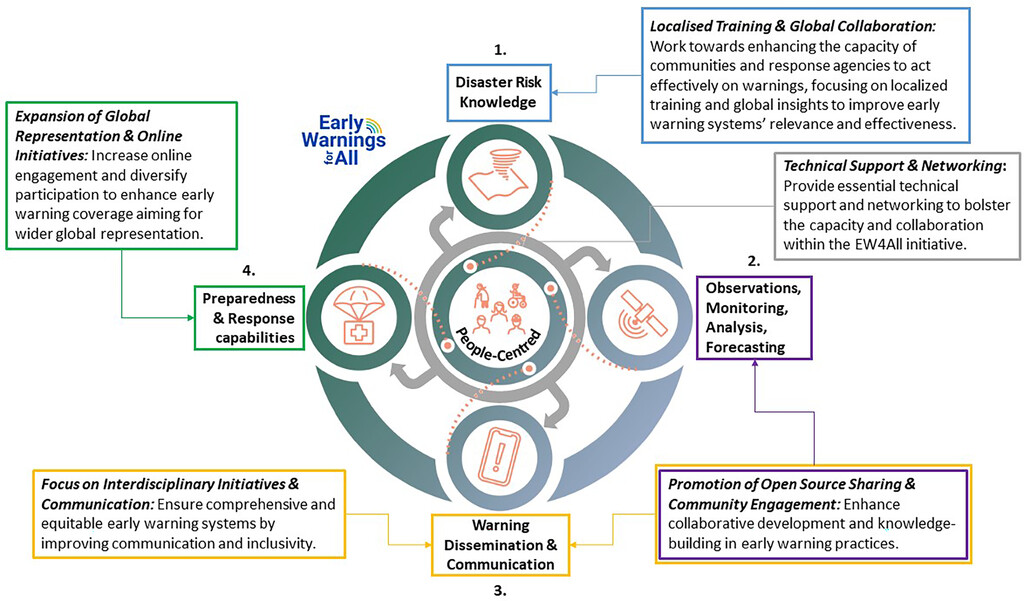From Research to Operations: How HEPEX Is Shaping the Future of Hydrological Forecasting Across Scales and Horizons
For two decades, HEPEX has been contributing to making hydrological forecasts better, more useful, and more widely available. However, the beginning of 2025 was marked for both the HEPEX workshop in Tuscaloosa celebrating the initiative’s 20th anniversary, and the publication of the HEPEX vision paper which lays out where hydrological forecasting stands today—and the direction it needs to take next. The paper aims to add scientific value and guide developments in hydrological forecasting systems by addressing the following questions:
- What science is needed to deliver systems that add value across spatial scales and time horizons
- What has the HEPEX Community of Practice (CoP) already achieved that has contributed to R2O? and
- How can HEPEX contribute to global initiatives such as the United Nations EW4All addressing hydrological extremes?
In this blog you can find some of the key takeaways!
A Global Community with a Clear Mission
HEPEX started with the idea of bringing together the science of forecasting with the practical needs of people who rely on hydrological forecasts. Since then, HEPEX has grown into an active international community with over 700 members, including scientists, operational forecasters, engineers, and decision-makers. What sets HEPEX apart is its focus on collaboration, open exchange of ideas, and a commitment to moving scientific advances into real-world applications.
Listen also to the podcast explaining what HEPEX is and why hydrological ensemble prediction is important. Available in Spotify, Apple/iTunes, Amazon, and iHeart.
What Makes a Good Forecast?
A good forecast is not just accurate. It must be reliable, timely, user-friendly, and suited to the needs of those who use it. HEPEX emphasizes a multi-perspective approach to evaluating forecasts. This includes checking how well forecasts perform in different regions, for different types of users (from dam managers to emergency responders), and under different hydro-meteorological conditions. Importantly, evaluation should not just be about numbers—it should also consider how forecasts are used and what impacts they have on real decisions.
AI and its Future in Forecasting
One of the most exciting developments in recent years is the use of AI/ML in hydrology. These technologies can help analyze vast amounts of data, detect patterns, and improve predictions. But they also raise new questions: How do we make sure AI models are trustworthy? How do we explain their results to non-experts? And how can AI models be used alongside traditional physical or process-based models that simulate how water moves through rivers and landscapes? In the paper, we call for a balanced approach—combining the strengths of both data-driven and process-based models, and ensuring new methods are rigorously tested and clearly communicated.
Beyond the Science: Communication and Impact
Even the best forecast is useless if it is not understood or trusted. That is why HEPEX stresses the importance of communication. This includes using plain language, visual tools, serious games, and co-creating messages with users. New approaches like storytelling and scenario-based communication can help people better grasp complex information, particularly during high-stress events such as floods.
The paper also urges forecasters to think beyond just predicting streamflow. What really matters to communities is impact: Will my home be flooded? Will crops fail? Can I still access clean water? To answer these questions, forecasters need to link their predictions to real-world consequences and work closely with social scientists and local communities.
Training the Next Generation and Building Capacity
Forecasting is as much about people as it is about models, and therefore HEPEX has always placed a strong emphasis on education and capacity development. Workshops, webinars, and open-source tools are just some of the ways HEPEX is helping to spread knowledge and build local capacity.
Supporting Global Goals Like EW4All
Finally, the HEPEX vision is closely aligned with global initiatives like the United Nations’ Early Warnings for All (UN EW4All), which aims to ensure that everyone on Earth is protected by early warning systems by 2027. HEPEX’s work on training, open data sharing, and interdisciplinary collaboration supports each of the four EW4All pillars—addressing risk knowledge, monitoring and forecasting, communication, and preparedness.
The HEPEX CoP identified fields of contribution to the four pillars of the UN EW4All initiative.
What’s Next?
Looking ahead, HEPEX sees several key challenges: scaling up local successes to global impact, closing the gap between research and operations, and building forecasting systems that are flexible, inclusive, and ready to face an uncertain future. Whether it is through AI-enhanced predictions, better user engagement, or stronger international partnerships, HEPEX will continue to play a leading role.
You can read the full vision paper here: https://doi.org/10.1175/BAMS-D-24-0322.1
If you are working in ensemble predictions, risk management, or even just interested in how forecasting helps society, we invite you to be a member of the community (join us HERE).

0 comments